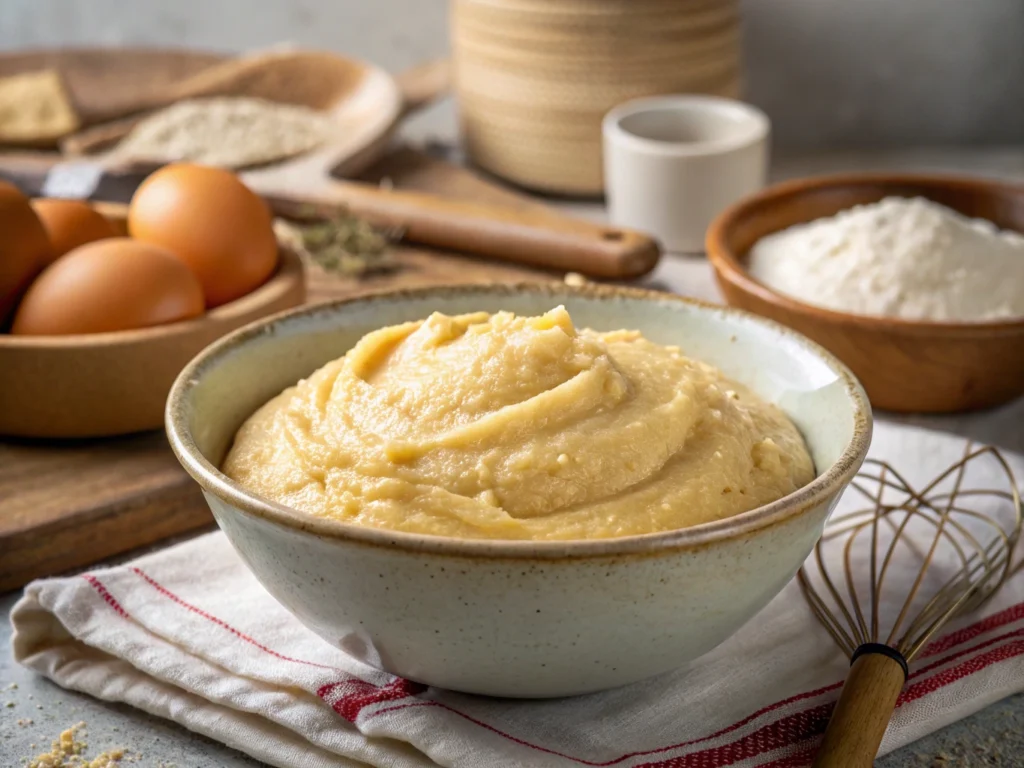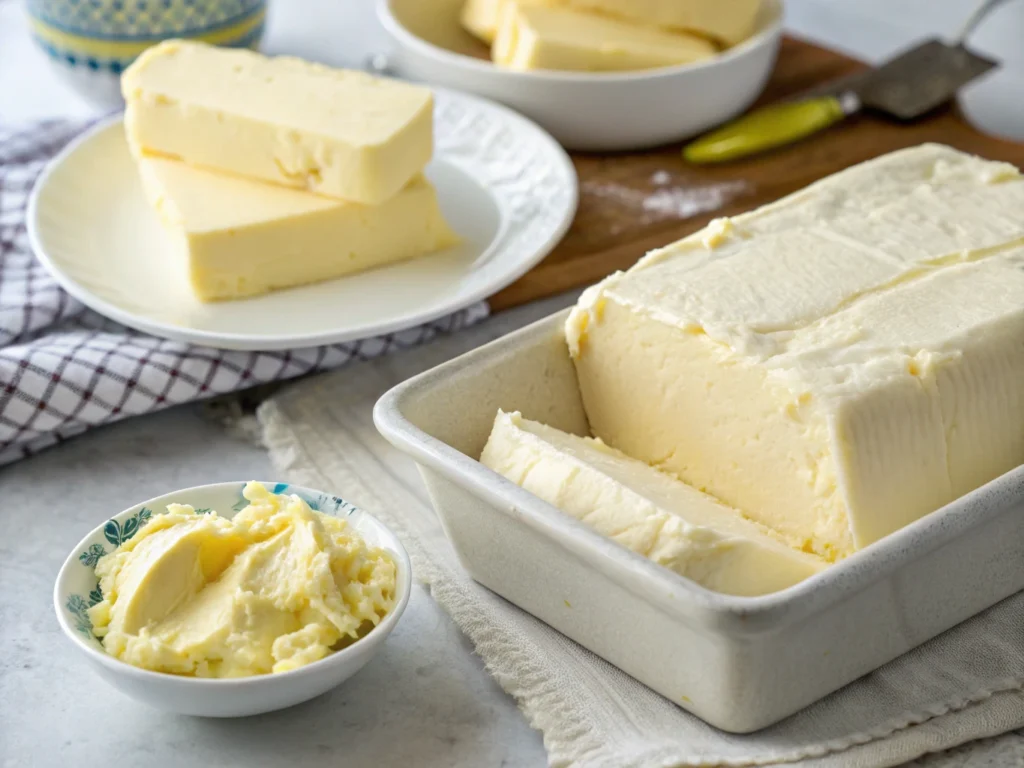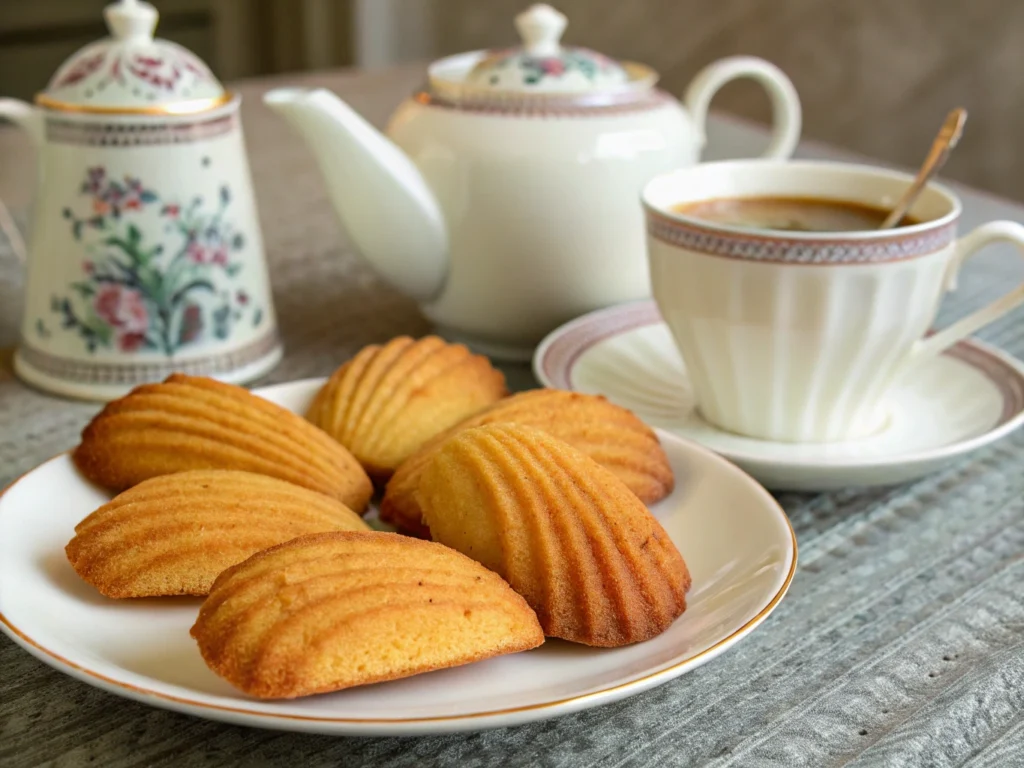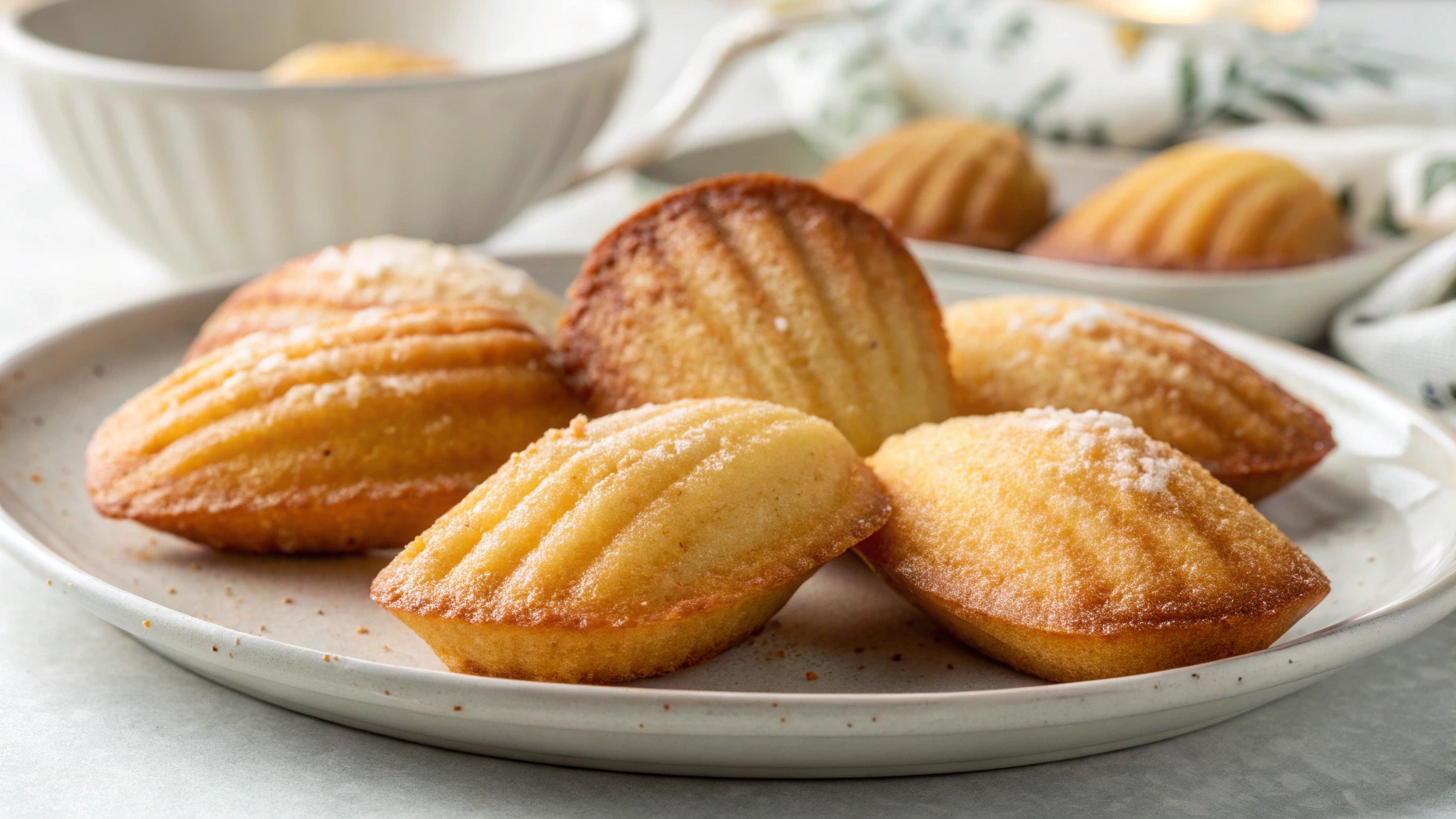If you’ve ever wondered why do you chill madeleine batter, you’re not alone. It’s a question that often perplexes baking enthusiasts and pros alike. Chilling might seem like a tedious extra step, but it’s actually a non-negotiable part of crafting these elegant French treats. From ensuring the batter rises properly to deepening its flavors, chilling plays a pivotal role in the baking process.
In this article, we’ll explore the science behind chilling, how it elevates the quality of your Madeleines, and common pitfalls to avoid. So, let’s dive into the details, starting with the why and how of this essential technique.
The Importance of Chilling Madeleine Batter
The Role of Temperature in Baking
Temperature is the unsung hero of baking. It governs everything, from the way ingredients interact to how your finished treats look and taste. For Madeleines, this couldn’t be more true. Chilling the batter controls the way it behaves when exposed to high heat. Without this step, the batter spreads too quickly, causing flat, uneven results—far from the signature shell shape we all love.
When the chilled batter meets a hot oven, the sudden contrast in temperature triggers a magical reaction: steam release. This is what forms the iconic hump on top of the Madeleine. Without chilling, you risk losing this hallmark feature, leaving you with a dessert that’s not quite a Madeleine.
The Science Behind Chilling Batter

The magic of chilling is rooted in science. As the batter cools, the butter solidifies. This slows down the baking process, ensuring the batter doesn’t spread uncontrollably. The firm consistency also helps the batter retain its shape while baking, preserving the intricate ridged shell pattern.
Moreover, chilling allows the flour in the batter to absorb moisture more evenly. This process not only improves consistency but also leads to a tender crumb—a hallmark of perfect Madeleines. By giving the batter time to rest, you’re ensuring that all the ingredients have melded together harmoniously, creating a well-rounded flavor profile.
How Chilling Enhances the Quality of Madeleines
Flavor Enhancement Through Chilling
One of the best-kept secrets in baking is how chilling improves flavor. When you let the batter rest, a process called maturation kicks in. During this time, the ingredients meld together, creating a richer, deeper taste. The butter’s creaminess shines through, and the subtle sweetness of the sugar becomes more pronounced. This harmonious blending of flavors is one reason professional bakers emphasize why do you chill madeleine batter before baking.
Moreover, enzymes in the flour break down starches into simpler sugars during the resting period. This transformation not only boosts flavor but also enhances the batter’s natural sweetness. Even a quick 30-minute chill can make a noticeable difference, but for the ultimate flavor payoff, many bakers recommend chilling the batter overnight.
Impact on Texture and Structure

Chilling doesn’t just improve the taste; it also has a profound impact on the texture and structure of Madeleines. When the butter solidifies in the fridge, the batter thickens. This thicker consistency ensures the Madeleines hold their shape during baking, maintaining their iconic ridged shell and the beloved hump on top.
Without chilling, the batter would spread too quickly, producing flat and unappealing cakes. Worse, the texture would suffer, leaving you with dense or overly chewy Madeleines. By chilling, you give the batter time to firm up, ensuring that the final product is light, tender, and perfectly balanced.
Additionally, the gradual melting of chilled butter during baking creates pockets of steam. This steam is what gives the Madeleines their airy, melt-in-your-mouth crumb. If you’ve ever wondered why do you chill madeleine batter, it’s all about achieving that perfect texture and structure every time.
Best Practices for Chilling Madeleine Batter
Recommended Chilling Times
When it comes to chilling batter, timing is everything. For Madeleines, a minimum of 30 minutes in the refrigerator is essential. This short rest period allows the ingredients to settle, ensuring the batter is firm enough to bake evenly. However, if you’re aiming for bakery-quality results, chilling the batter for 1–2 hours is highly recommended.
For those who plan ahead, chilling overnight can take your Madeleines to the next level. The extended resting time allows flavors to develop fully and guarantees a consistently thick batter. Just be careful not to overdo it—chilling for more than 24 hours might lead to drying out or ingredient separation.
Proper Storage Techniques to Avoid Issues
To get the best results, proper storage is crucial. Always cover the batter tightly with plastic wrap, pressing it directly against the surface to prevent air exposure. This simple step avoids the formation of a dry skin on the batter, which can ruin its consistency.
If you’re short on time and need to store the batter longer, consider dividing it into portions and freezing it. Freezing preserves the batter’s quality and ensures it’s ready whenever you need it. Just let it thaw in the fridge before baking.
By following these best practices, you’ll master the art of chilling batter and consistently bake the most flavorful, perfectly shaped Madeleines. And remember, why do you chill madeleine batter? It’s the secret to taking your baking from good to unforgettable!
Common Mistakes and How to Avoid Them
Over-Chilling: What Happens When You Chill Too Long
While chilling is critical for achieving the perfect Madeleine, over-chilling can backfire. When batter sits in the fridge too long—especially beyond 24 hours—it begins to dry out. This results in cakes with a grainy texture and uneven rise. Additionally, excessively chilled butter can harden to the point where it doesn’t blend smoothly during baking, leading to unevenly baked Madeleines.
To avoid this, always store the batter in an airtight container or cover it tightly with plastic wrap. Press the wrap directly against the batter’s surface to keep out air and retain moisture. If you need to store the batter for an extended period, consider freezing it instead. This preserves the consistency and flavor without risking over-chilling.
Skipping the Chill Step: Implications on Quality
Skipping the chilling step might seem like a time-saver, but it compromises the entire baking process. Without chilling, the batter spreads too quickly in the oven, causing flat and shapeless Madeleines. Worse, the crumb structure becomes dense and less tender.
If you’re pressed for time, even a short chill of 30 minutes can make a noticeable difference. For the best results, aim for at least an hour. And remember, why do you chill madeleine batter? To ensure your cakes rise beautifully, hold their iconic shape, and taste as divine as they look.
FAQs About Chilling Madeleine Batter
Can You Skip the Chilling Step?
While it might seem tempting to skip the chilling step, especially when you’re short on time, it’s a move you’ll likely regret. Chilling ensures the batter sets properly, allowing for a controlled rise during baking. Without this step, you risk flat, shapeless Madeleines that lack their signature hump. The batter also spreads too quickly, leaving you with uneven textures and less-than-perfect cakes.
If time is an issue, even a quick 15–30 minute chill can significantly improve your results. That said, the longer the batter rests, the better it performs. So, why cut corners when patience can deliver beautifully risen, tender Madeleines? This is why the question why do you chill madeleine batter is so crucial—it’s the secret to consistency and quality.
How Does Chilling Affect Flavor?
Chilling is about more than texture—it works wonders for flavor too. During the resting period, the ingredients in the batter get a chance to meld together. This blending process, often referred to as maturation, deepens the flavor profile of your Madeleines. The buttery richness becomes more pronounced, while subtle sweet notes are enhanced as enzymes in the flour break down starches into sugars.
Imagine biting into a Madeleine that’s not just visually perfect but also tastes richer and more refined. That’s the magic chilling brings to the table. It’s another compelling reason why do you chill madeleine batter should never be overlooked.
What’s the Ideal Temperature for Chilling Batter?
The ideal temperature for chilling Madeleine batter is about 4°C (40°F), which is the standard setting for most refrigerators. At this temperature, the butter in the batter solidifies just enough to thicken the mixture without freezing it. This balance is crucial for achieving the right consistency and ensuring the batter bakes evenly.
If you’re storing the batter for longer than a few hours, make sure it’s tightly sealed in an airtight container or covered with plastic wrap. Press the wrap directly onto the surface of the batter to prevent air exposure, which can cause the batter to dry out or form a crust.
Does Chilling Improve the Texture?
Absolutely! Texture is one of the biggest beneficiaries of the chilling process. When the batter is cold, it holds its shape better during baking, leading to well-defined shell patterns and a pronounced hump. The gradual melting of chilled butter creates steam pockets, which contribute to the cake’s light, airy crumb. Without chilling, you’d end up with dense, overly soft Madeleines that lack their characteristic elegance.
How Long Should You Chill the Batter?
Chilling times can vary based on your schedule and preferences, but here’s a quick breakdown:
- Short chill (15–30 minutes): Provides some improvement in texture and structure, though the results may not be optimal.
- Standard chill (1–2 hours): Offers significant benefits for texture, rise, and flavor development.
- Overnight chill (8–12 hours): Delivers the best results by fully maturing the batter and maximizing flavor.
If you need to prepare batter ahead of time, chilling it overnight is the ideal solution. However, avoid going beyond 24 hours as this could dry out the batter or affect its consistency. For extended storage, freezing is a better option.
Can You Freeze Madeleine Batter?
Yes! Freezing is an excellent way to preserve batter for future use without compromising quality. Portion the batter into a piping bag or airtight container before freezing. When you’re ready to bake, let the batter thaw in the fridge until it returns to the correct consistency. Even frozen batter benefits from chilling, as the resting period still allows the flavors to develop.
By addressing these common questions, it’s clear why do you chill madeleine batter is more than just a technical detail—it’s a game-changer for achieving bakery-level Madeleines. So, whether you’re a seasoned baker or a novice, never underestimate the power of this simple yet essential step.
Conclusion: Perfecting Your Madeleines Through Chilling
Key Takeaways on Chilling Madeleine Batter
Chilling the batter is the secret ingredient behind every successful Madeleine bake. Whether you’re aiming for a buttery-rich flavor, a tender crumb, or the iconic hump, this step is non-negotiable. Why do you chill madeleine batter? It’s all about ensuring consistency, flavor, and structure.
The chilling process does more than just prepare the batter for baking. It allows the ingredients to harmonize, ensuring that the flavors meld together seamlessly. Butter solidifies, ensuring controlled spreading, while the resting period gives flour time to hydrate fully. These subtle changes lead to a better, more refined texture in your final product.
By introducing a cold batter to a hot oven, you achieve the dramatic rise responsible for the classic hump. Without chilling, this reaction is less pronounced, leading to flatter, denser Madeleines. For the baker looking to elevate their skills, understanding this science-backed step is key.
Final Tips for the Perfect Bake
Perfecting your Madeleines starts with preparation. Here are some practical tips to guarantee success:
- Choose the right tools: Always use a well-buttered Madeleine pan to enhance the batter’s definition.
- Experiment with chilling times: While a minimum of 30 minutes works, overnight chilling can bring out deeper flavors.
- Mind your fridge temperature: Keep it around 4°C (40°F) to ensure the batter firms up without freezing.
- Avoid over-chilling: If the batter sits too long (over 24 hours), it may dry out or separate.
Lastly, don’t rush! Taking the time to chill your batter shows in the final bake. Patience truly pays off when it comes to crafting these delicate French cakes.
Additional Resources and Recipes to Explore
Exploring More About Madeleines

If Madeleines have captured your imagination, you’re not alone! These elegant French treats are a favorite for good reason. They’re versatile, perfect for pairing with tea or coffee, and offer endless opportunities for flavor experimentation. Now that you understand why do you chill madeleine batter, why not delve deeper into other tips and tricks for perfecting your bake?
For instance, did you know that buttering your pan thoroughly and dusting it with flour can help create the flawless ridged pattern on your Madeleines? Or that infusing your batter with flavors like lemon zest, orange blossom water, or even matcha can elevate these classic cakes?
Recipe Recommendations to Enhance Your Skills
Once you’ve mastered the basics, try exploring some creative twists. Check out Why Are Madeleine Cookies So Good? to discover what makes these treats special and how you can put your own spin on them.
For practical advice, How to Keep Madeleines Moist is a great resource. It provides expert tips to ensure your cakes stay fresh and tender, even days after baking.
If you’re ready for a challenge, explore variations like chocolate-dipped Madeleines or savory versions incorporating herbs and cheese. Experimenting with these recipes will deepen your understanding of the techniques involved and expand your skills.
Why Every Baker Should Master Madeleines
Mastering Madeleines is a rewarding journey for any baker. Their delicate texture and subtle flavor make them a standout addition to any repertoire. Plus, understanding steps like why do you chill madeleine batter equips you with foundational knowledge that applies to other baked goods as well.
The next time you bake, remember that the little things—like chilling, proper storage, and patience—can transform a good bake into an unforgettable one. For more inspiration and techniques, be sure to explore DeliciouRecipes and take your baking skills to the next level!

